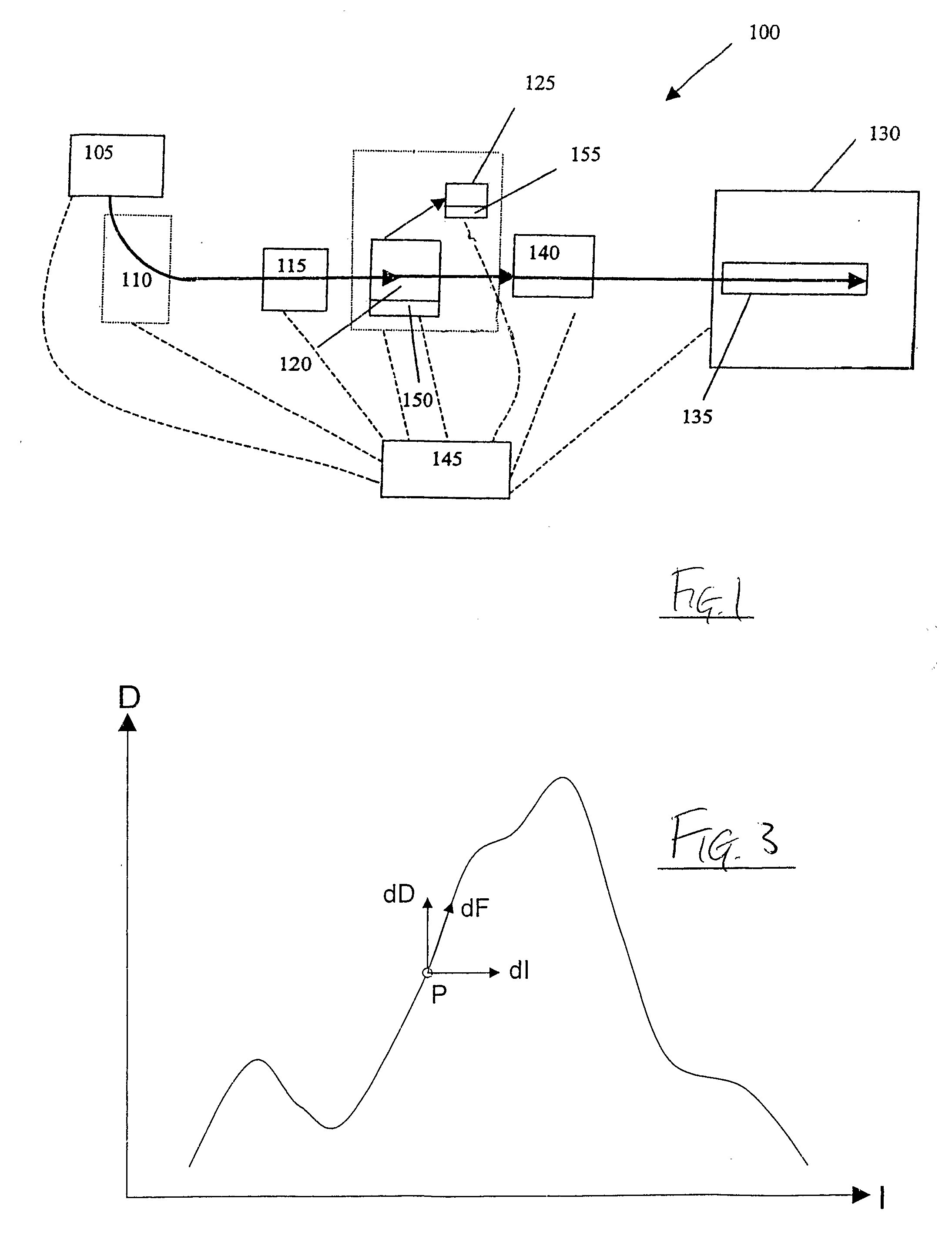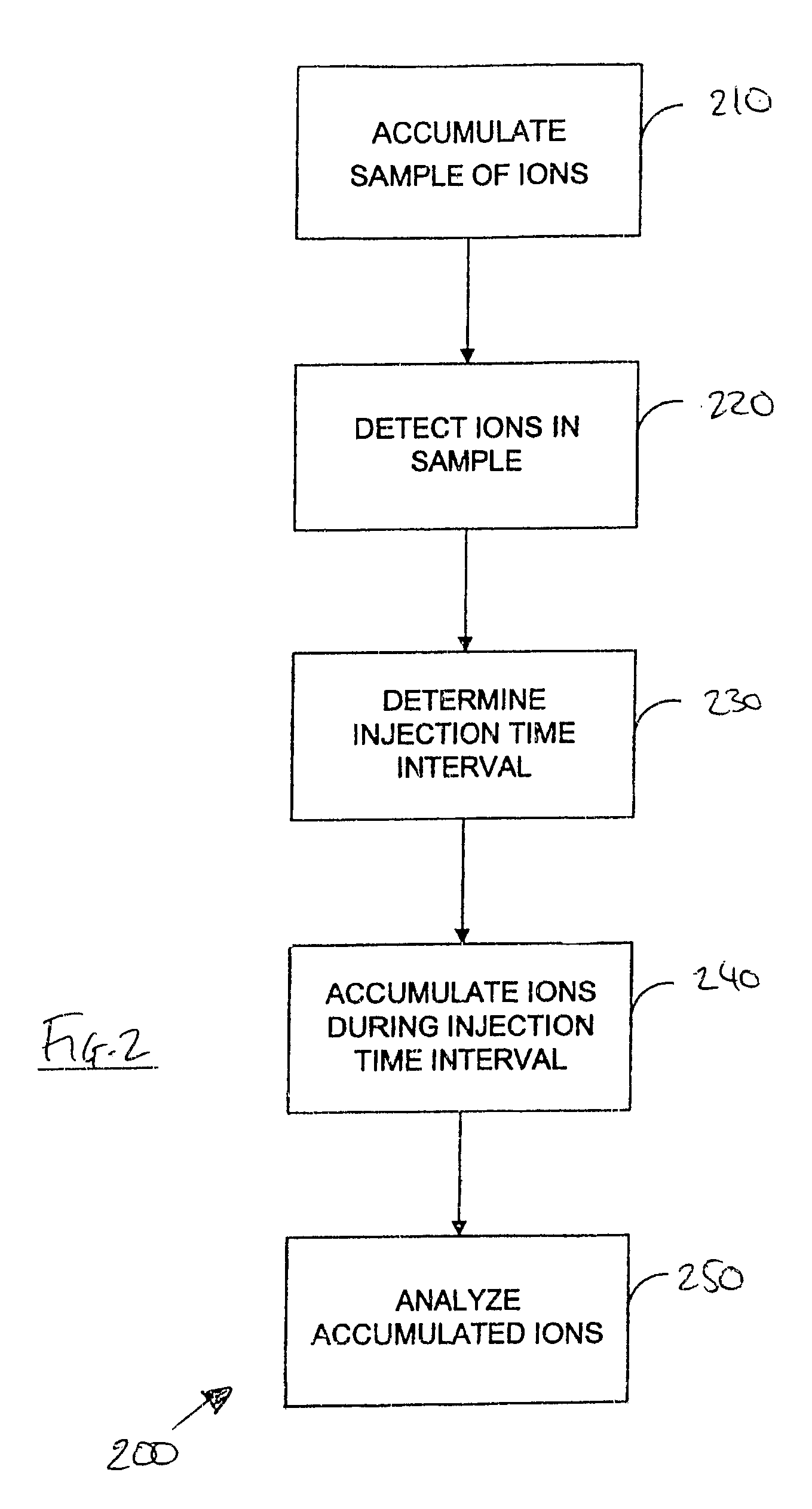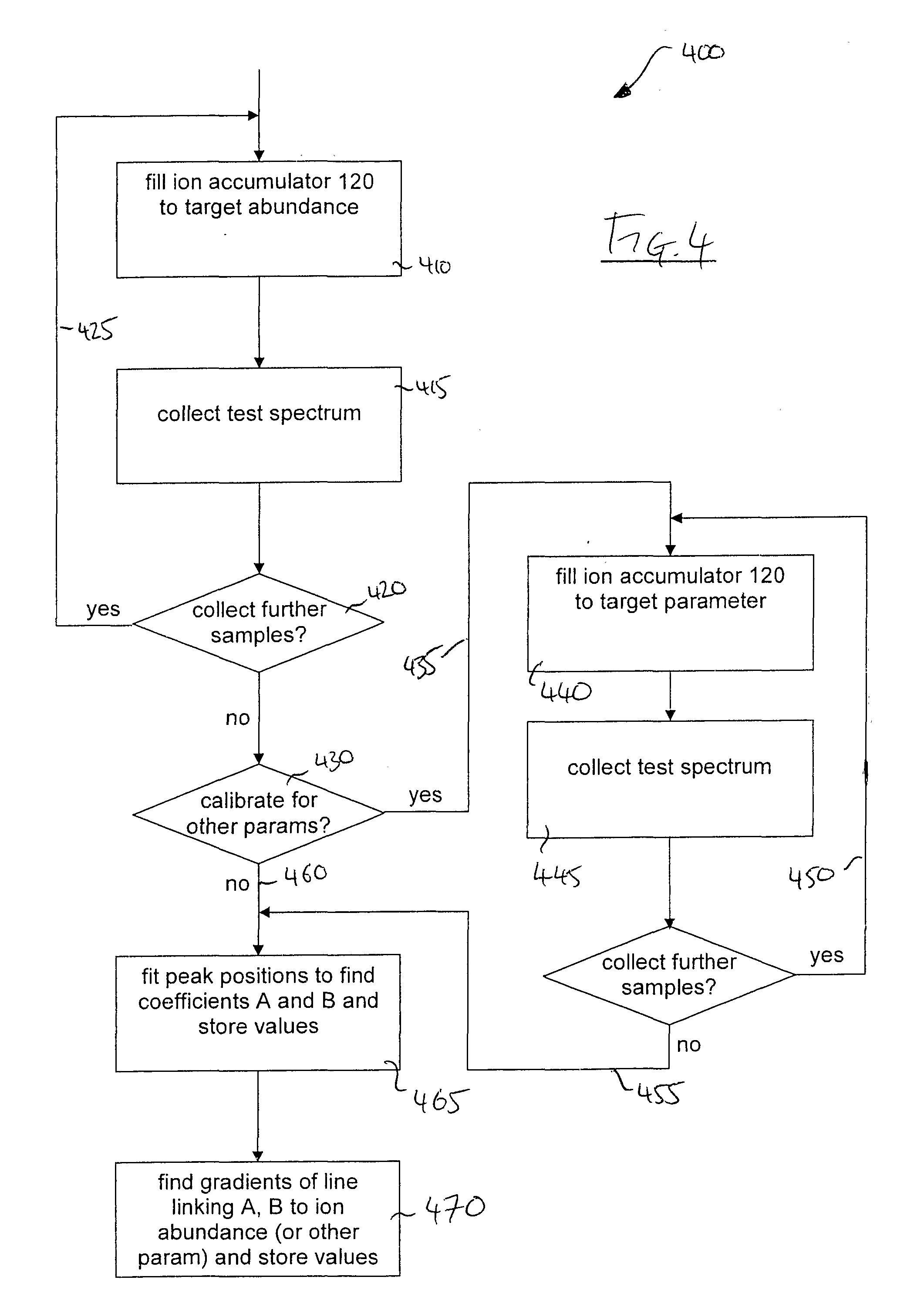Method Of Improving A Mass Spectrum
a mass spectrum and mass technology, applied in mass spectrometers, stability-of-path spectrometers, instruments, etc., can solve the problems of ion progressively changing mass to charge ratio instability, desideratum conflict, sensitive to the total number of ions introduced and trapped within the volume, etc., to improve the determined positional value of the peak
- Summary
- Abstract
- Description
- Claims
- Application Information
AI Technical Summary
Benefits of technology
Problems solved by technology
Method used
Image
Examples
examples
[0077] In order that the present invention may be better understood, an example is now presented in the context of FT-ICR-MS. Calibration is executed by collecting test spectra at a series of six different target ion abundances T of 2×105, 5×105, 1×106, 2×106, 5×106 and 1×107. These values are chosen as they are centred around an optimum ion abundance of 2×106. For the sake of simplicity, we will assume that each test spectrum contains only two peaks, at masses 300 and 1700. The test spectra are analysed to produce the following table that contains the target abundance T, the measured abundance I, and the peak frequencies F1 and F2. Equation (1) is used to find coefficients A and B and gradients are calculated.
gradientfreqcoeffsSX = (Xi − Xi−1) / (Ii − Ii−1)itarg Tabund IF1F2ABSASB12 × 10540000300.00352.93890002−350——25 × 105105000300.00252.93890001.9−425−1.54 × 10−6−1.15 × 10−331 × 106220000300.00052.93790001.7−480−1.74 × 10−6−4.78 × 10−442 × 106430000299.99952.93690001.5−540−9.52 ...
PUM
 Login to View More
Login to View More Abstract
Description
Claims
Application Information
 Login to View More
Login to View More - R&D
- Intellectual Property
- Life Sciences
- Materials
- Tech Scout
- Unparalleled Data Quality
- Higher Quality Content
- 60% Fewer Hallucinations
Browse by: Latest US Patents, China's latest patents, Technical Efficacy Thesaurus, Application Domain, Technology Topic, Popular Technical Reports.
© 2025 PatSnap. All rights reserved.Legal|Privacy policy|Modern Slavery Act Transparency Statement|Sitemap|About US| Contact US: help@patsnap.com



